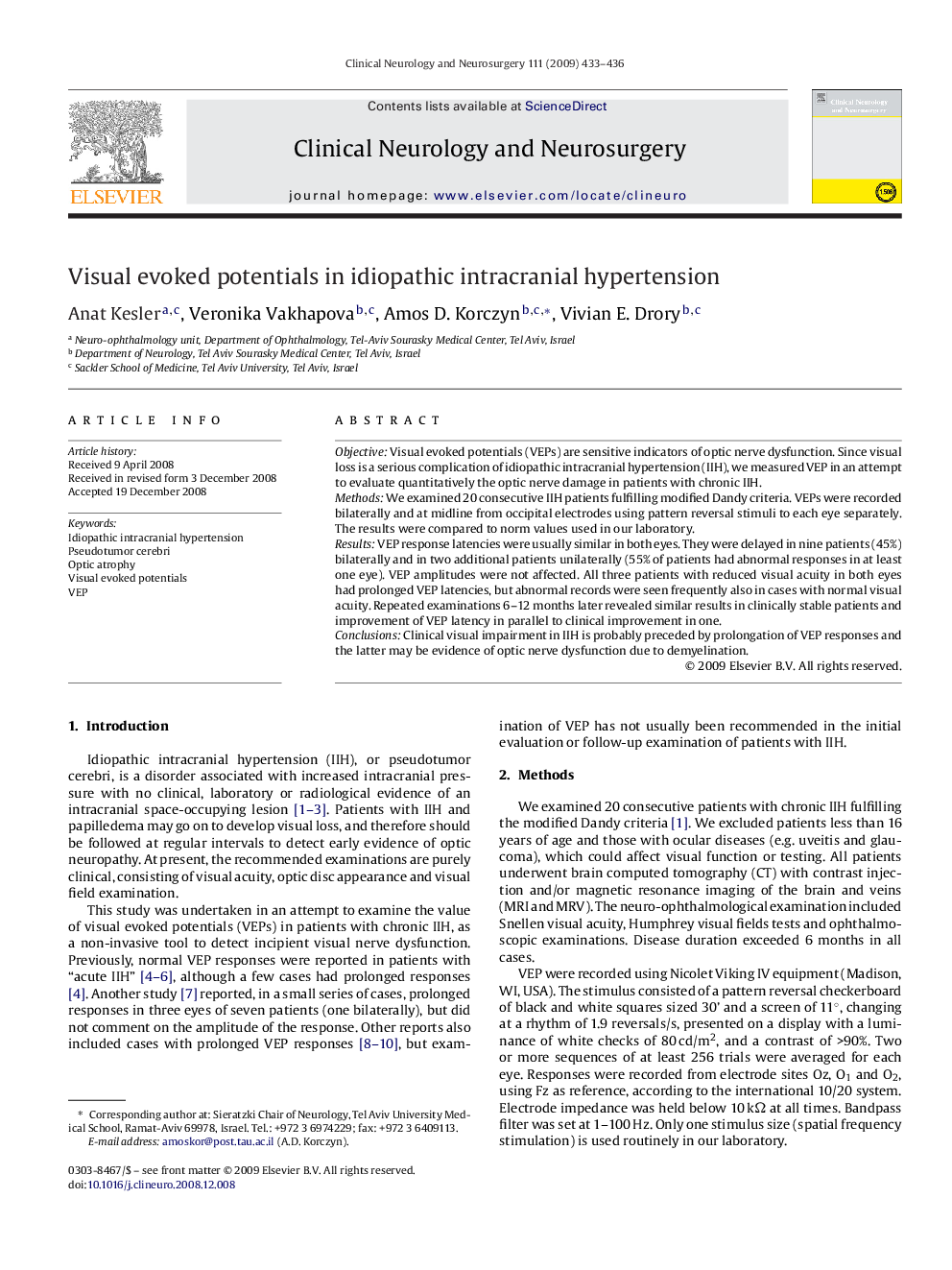| Article ID | Journal | Published Year | Pages | File Type |
|---|---|---|---|---|
| 3041656 | Clinical Neurology and Neurosurgery | 2009 | 4 Pages |
ObjectiveVisual evoked potentials (VEPs) are sensitive indicators of optic nerve dysfunction. Since visual loss is a serious complication of idiopathic intracranial hypertension (IIH), we measured VEP in an attempt to evaluate quantitatively the optic nerve damage in patients with chronic IIH.MethodsWe examined 20 consecutive IIH patients fulfilling modified Dandy criteria. VEPs were recorded bilaterally and at midline from occipital electrodes using pattern reversal stimuli to each eye separately. The results were compared to norm values used in our laboratory.ResultsVEP response latencies were usually similar in both eyes. They were delayed in nine patients (45%) bilaterally and in two additional patients unilaterally (55% of patients had abnormal responses in at least one eye). VEP amplitudes were not affected. All three patients with reduced visual acuity in both eyes had prolonged VEP latencies, but abnormal records were seen frequently also in cases with normal visual acuity. Repeated examinations 6–12 months later revealed similar results in clinically stable patients and improvement of VEP latency in parallel to clinical improvement in one.ConclusionsClinical visual impairment in IIH is probably preceded by prolongation of VEP responses and the latter may be evidence of optic nerve dysfunction due to demyelination.
